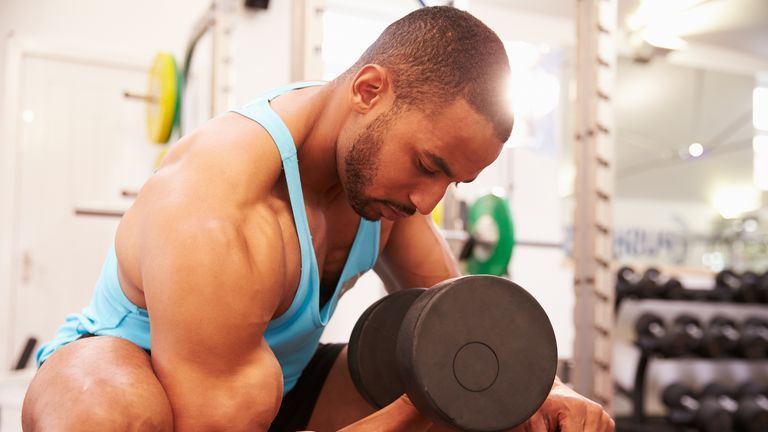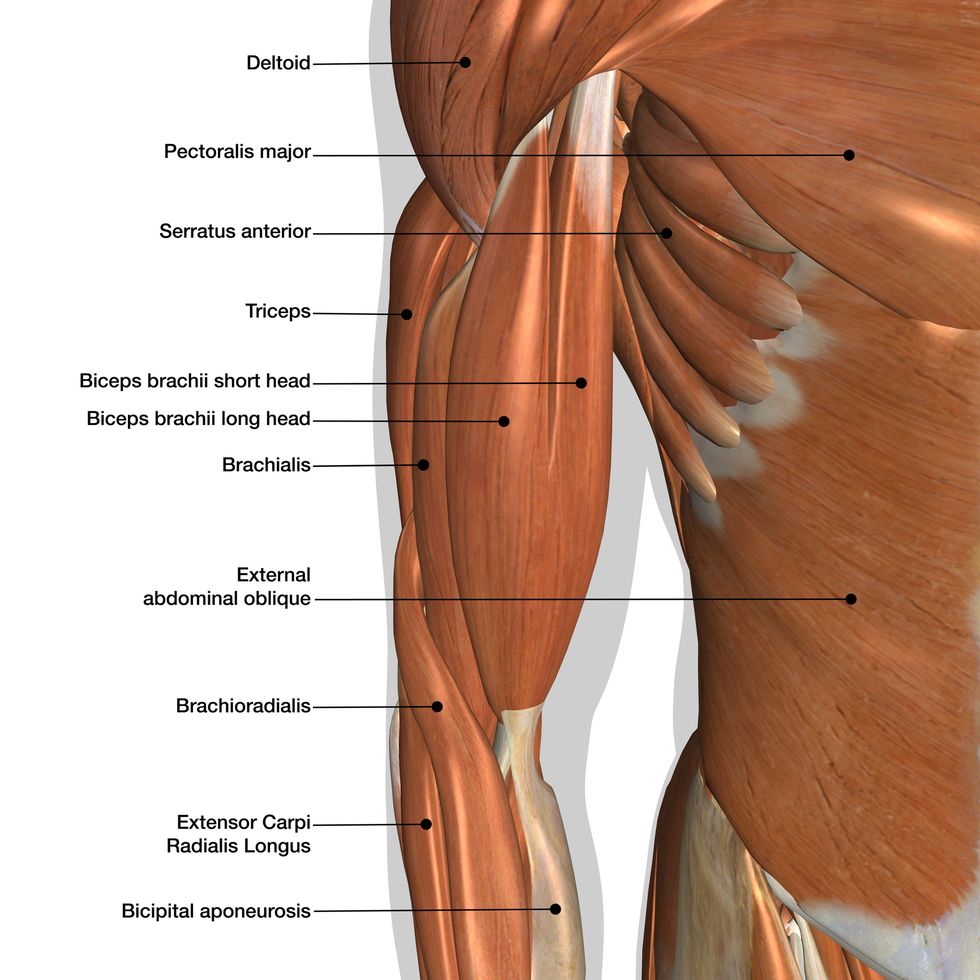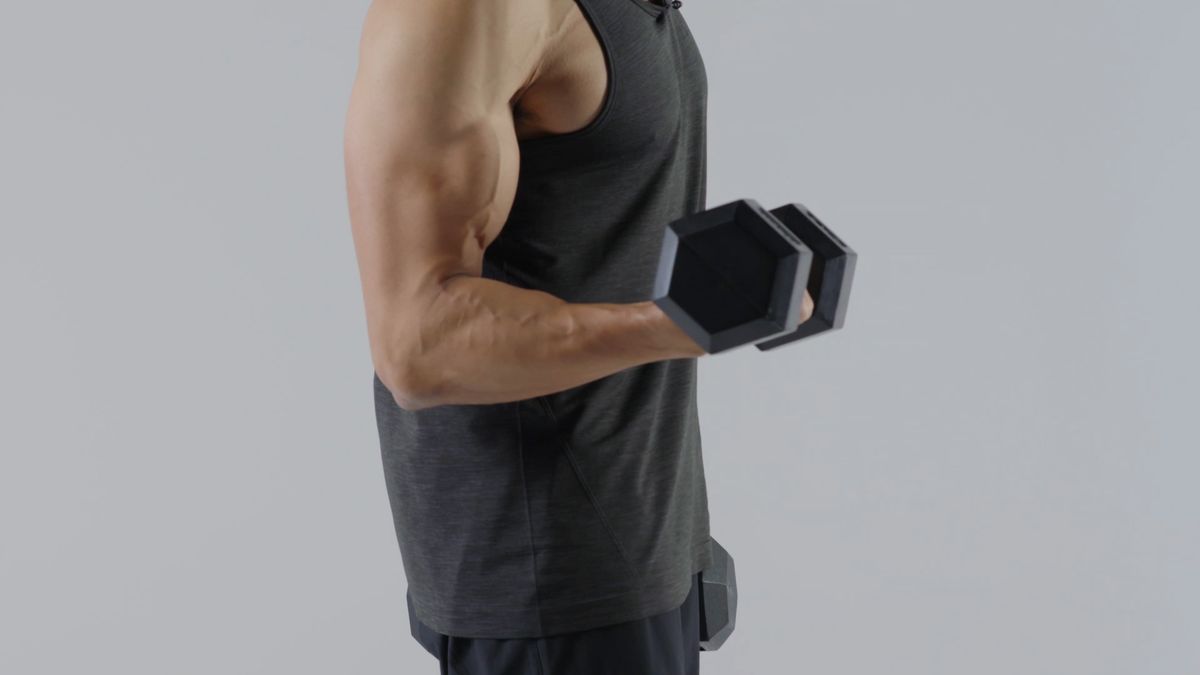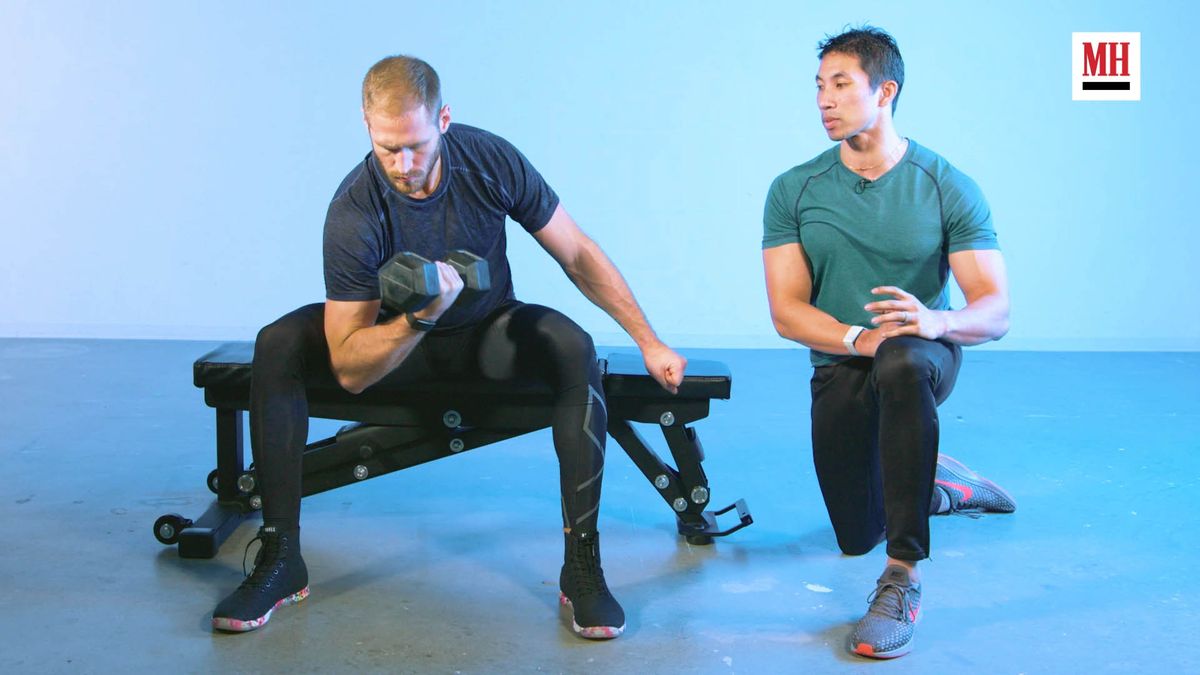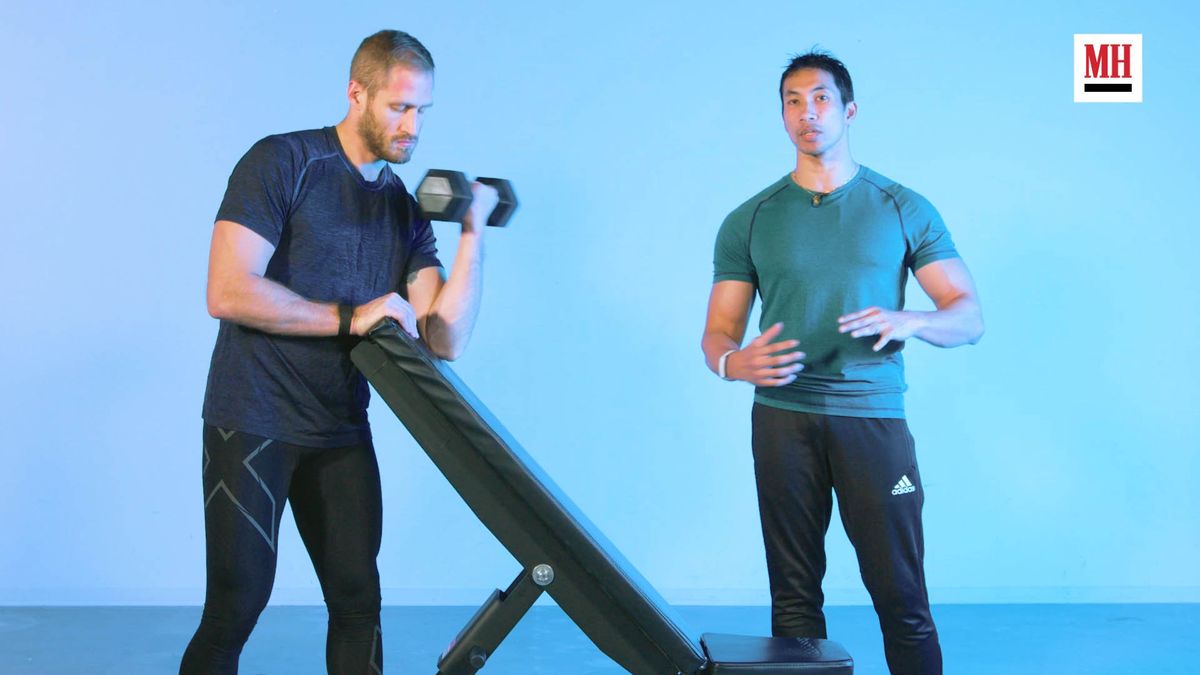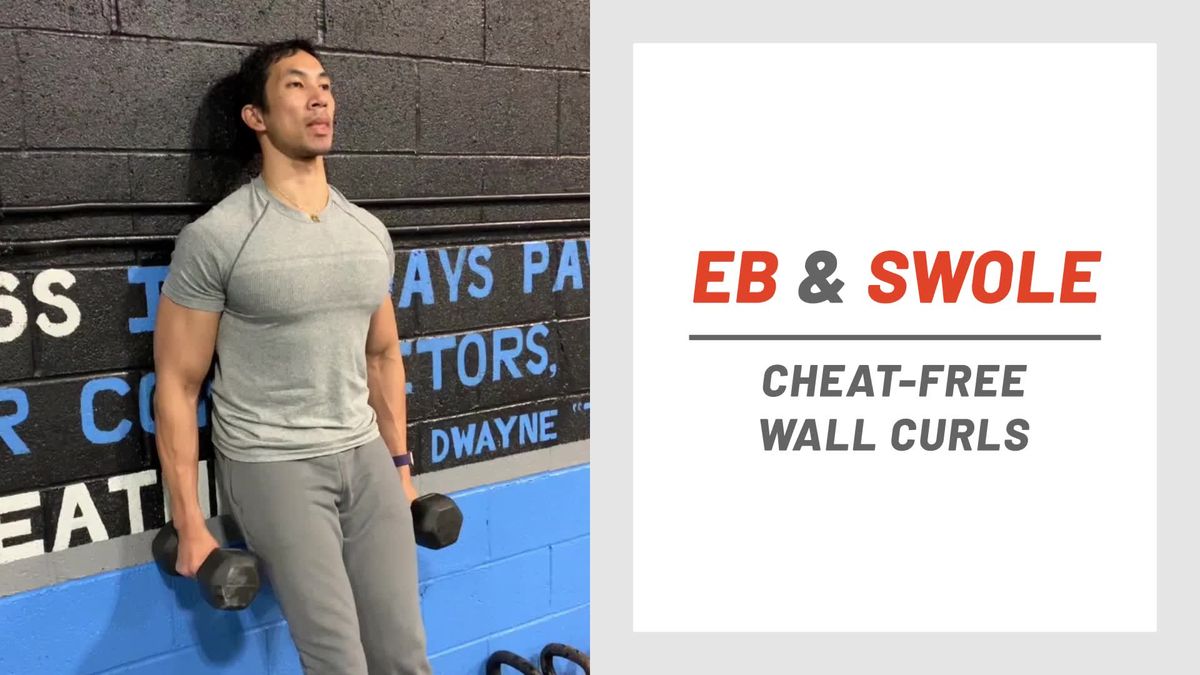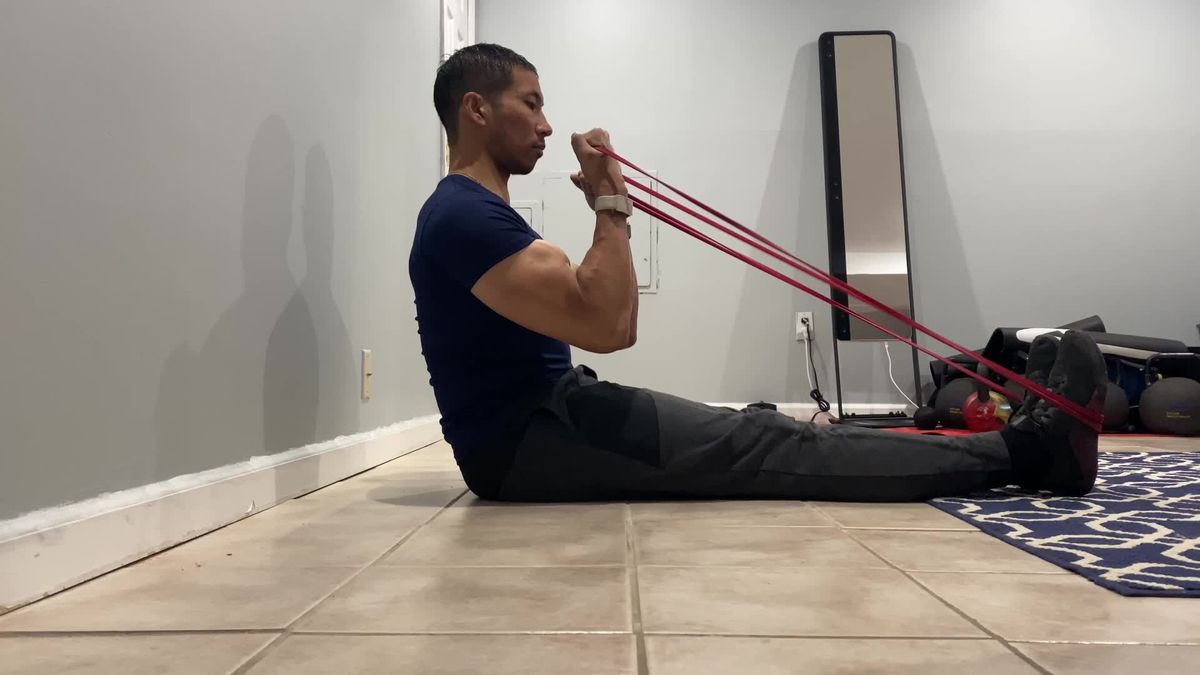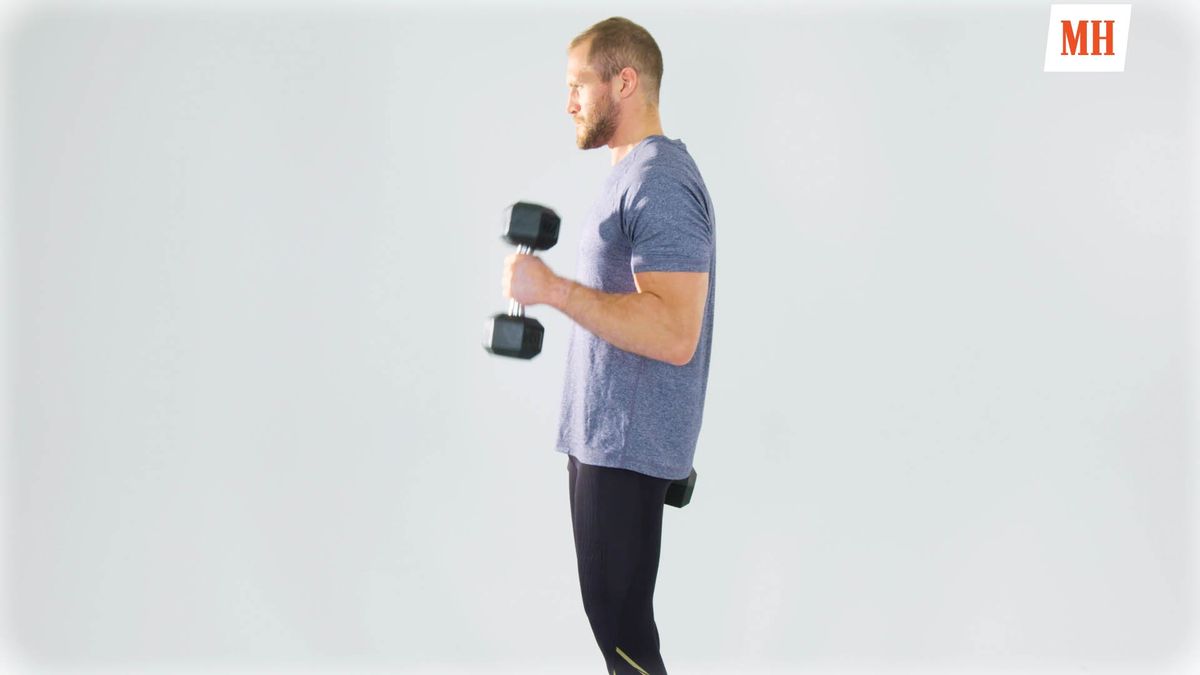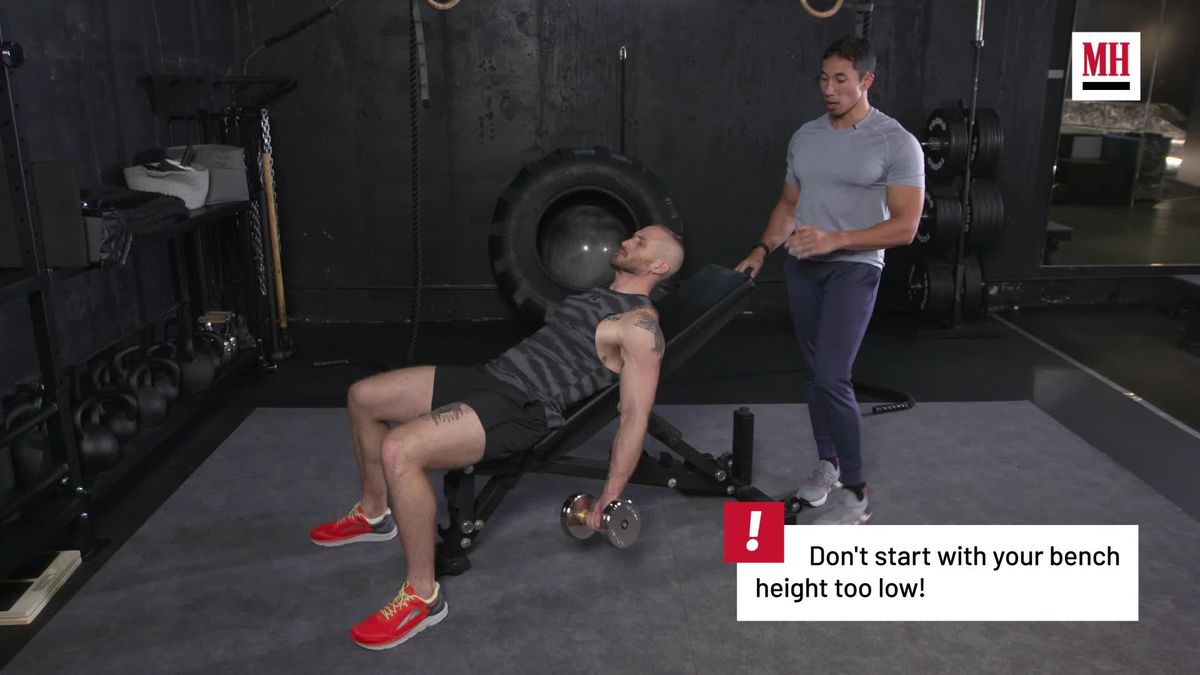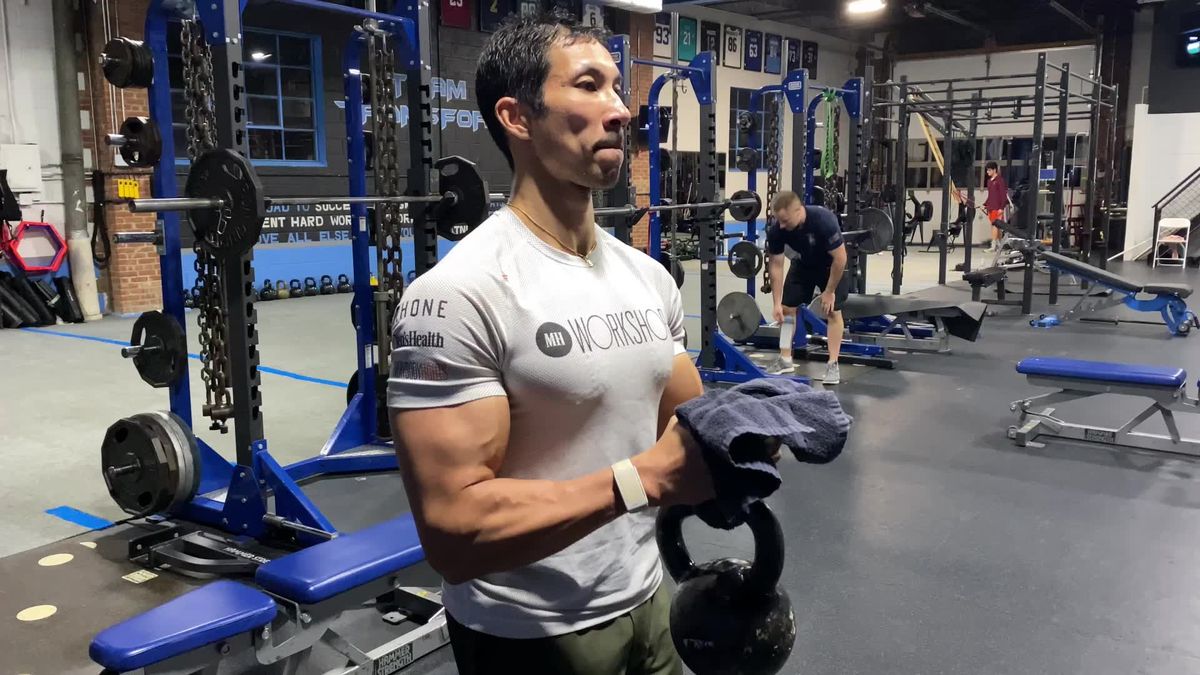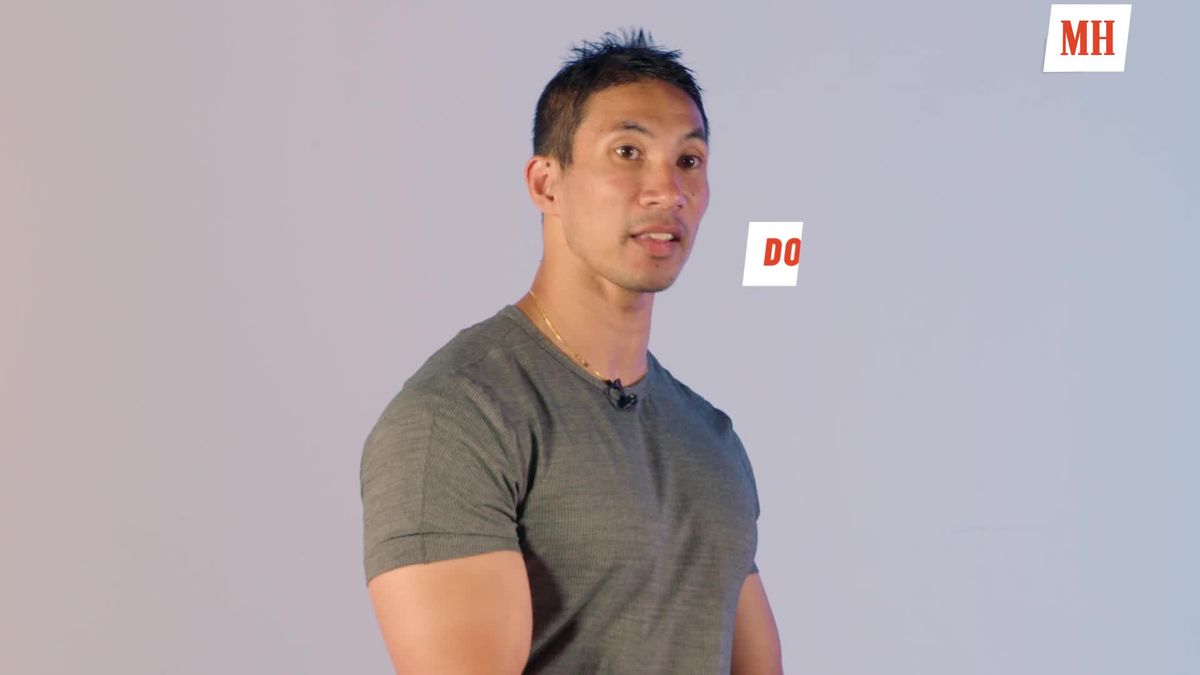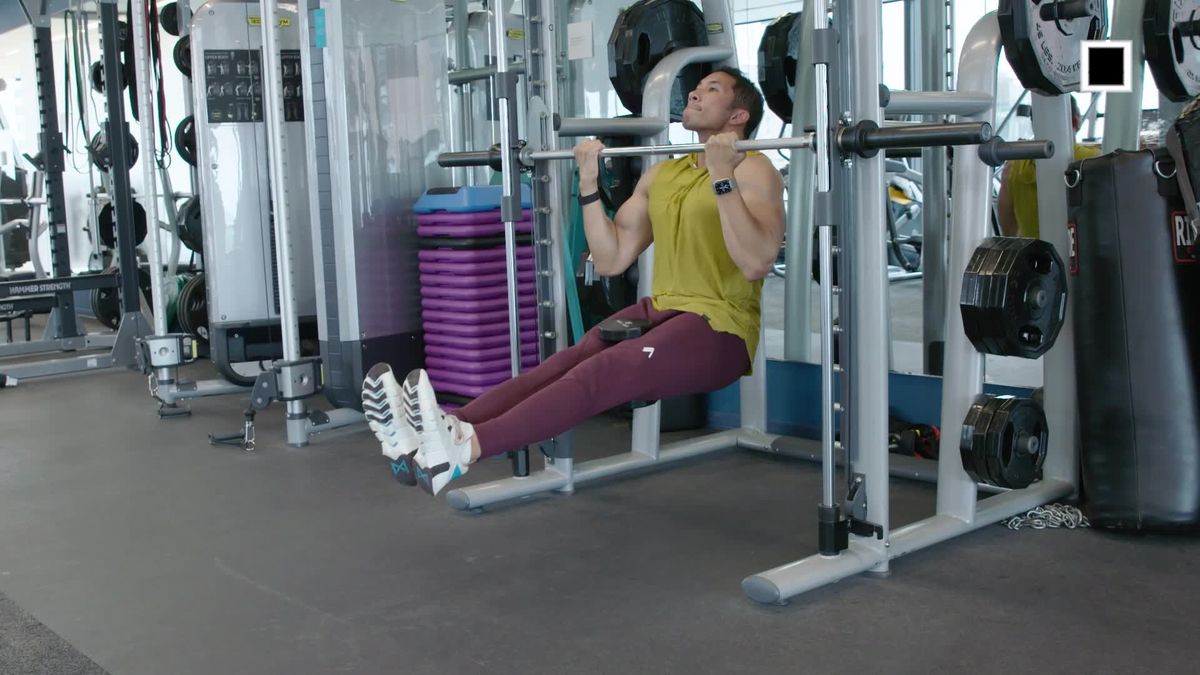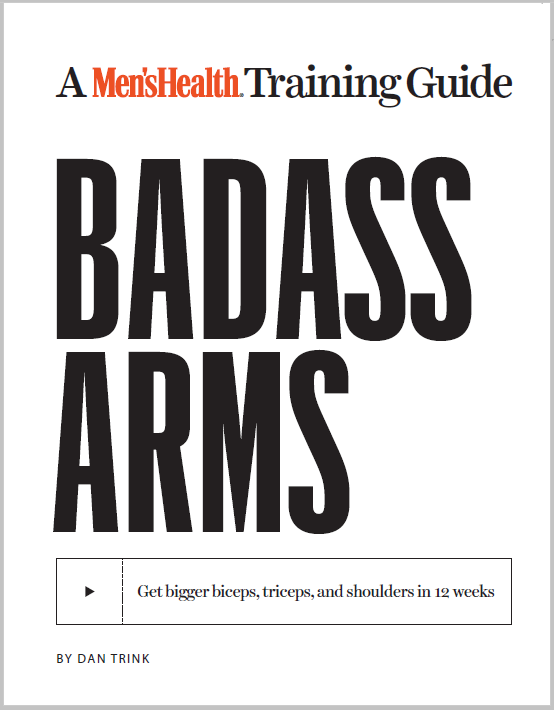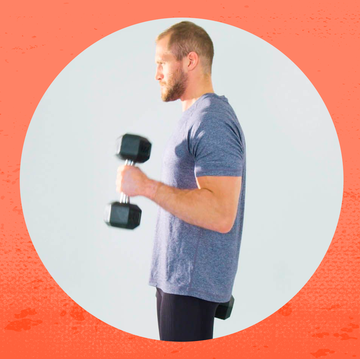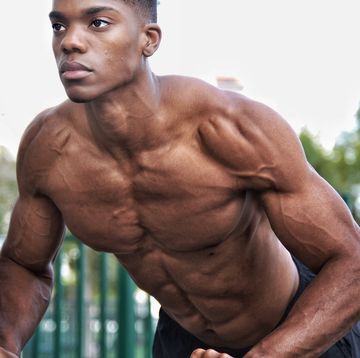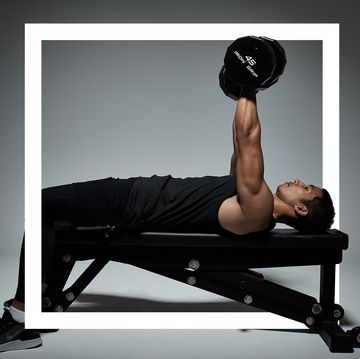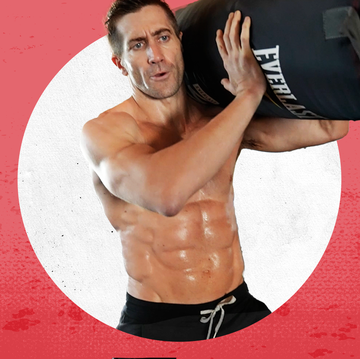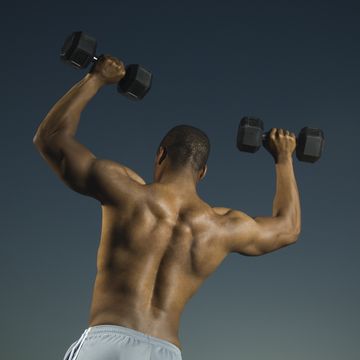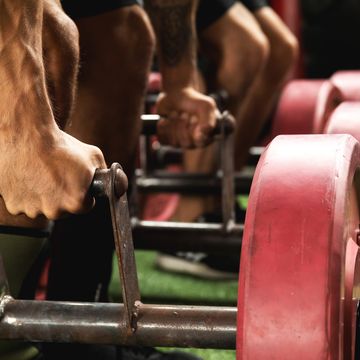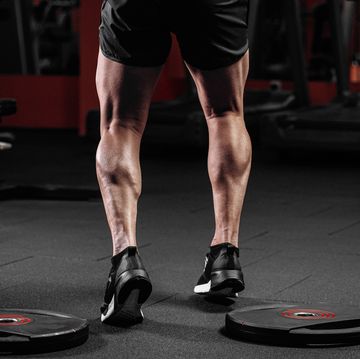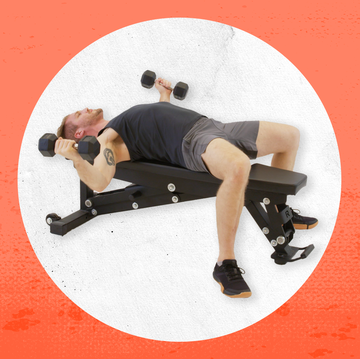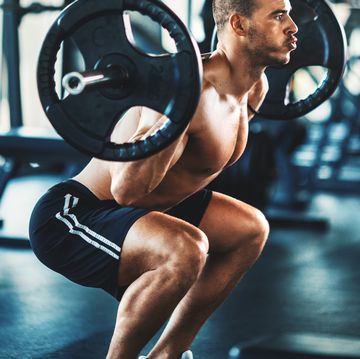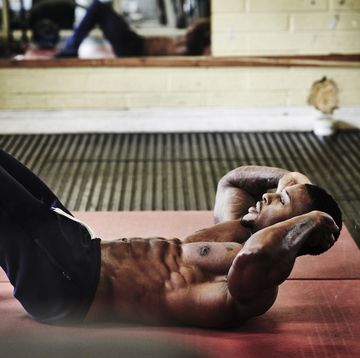NO ARM DAY WORKOUT is complete without a solid biceps pump. The big arm muscles are one of the most popular points of focus for mass-obsessed gym bros, and for good reason.
The biceps take up a prime position on the front side of the upper arm, making them one of the most visible muscles you can put on display, whether you're wearing a form-fitting t-shirt or no sleeves at all. And while some functional fitness adherents might not give the biceps their due, the muscles are essential for a wide range of movements too, like pulling and holding onto heavy objects.
There's more to biceps training than just stepping up to the weight rack and pumping through reps after rep of sloppy curls. You might eke through a few sessions without good form or alternating exercises and feel satisfied with your efforts, but you won't have success for very long. You'll need to understand more about the muscles and how you'll use them during each exercise variation to produce the results you're hoping for to build a pair of big, strong arms.
There's nothing like a big-time biceps flex—and to achieve a muscle peak you can be proud of, you'll need these biceps exercises. Consider this your permission to flex.
What You Need to Know About Your Biceps Muscles
Before jumping into biceps training, it helps to understand more about the muscles you're targeting. The biceps brachii is composed of two heads: a long and short head. Both heads originate at the scapula, although at different points. The long head sits on the outside of the arm, forming the biceps "peak", while the short head sits on the inside.
Most importantly, the muscle is tasked with flexion of the elbow, which means that any time you bend your arms—like the aforementioned bodybuilder pose—your biceps are putting in the work to make the move. If you want to be able to lift any type of load, from luggage to your kids, you'll need healthy flexion. Your biceps also supinate the forearm (turns it to face upward).
And when you train your biceps, you can't neglect the brachialis, the muscle the sits beneath the biceps and generates even more flex power. You'll get stronger, and your arm muscles will look bigger to boot.
How to Train Your Biceps
- Isolate the muscles
- Focus on flexion
- Supinate
To work your biceps, you'll mostly need to do exercises that isolate the muscle and force it to flex and supinate under load. That might not be as efficient as your training plan for some other muscles, which you can target as just one part of a more comprehensive plan using multi-joint movements—but isolation exercises allow you to really dial in on your progress and development. And building a strong set of biceps can only help you to get stronger overall, as all pulling movements (essential for training the big muscles in your back) will reap the rewards of your focused work.
Benefits of Training Your Biceps
- Build bigger arms
- Healthy elbow flexion
- Easier to do everyday tasks
Considering everything we've already covered, it should be fairly easy to identify some major benefits that come from training your biceps. Firstly, you'll grow the muscle, which is in line with what most people consider to be ideal physique goals. But it's more than just about looks—healthy elbow flexion will allow you to do more than you might expect, from hauling grocery bags to picking up your kids.
The Big Biceps Building Exercises
To help you hone those arms, we created this list of go-to moves to work your biceps. Some of these are classics; some are new. Some are a grind; some are fun. Some hit the long head of the muscle; some focus on the short head. To vary up the stimulus to your muscles, we'll mix up the tempo, add pauses with isometrics, and even change up the arm angle.
Pick the ones you like (and maybe some that you don’t), and use them to pump up your arms—and fill out your sleeves.
STANDING DUMBBELL CURL
Why: In a biceps-focused list like this, you can’t leave out the classic dumbbell curl. So we didn’t. It's everything you want: you'll hone elbow flexion and supination while isolating the biceps. But we would ask that you use a weight that makes sense: If you’re swaying back wildly and contorting your body—especially excessively arching your lower back—to lift the load, you should probably get a lighter pair of dumbbells.
How to do it:
- Grab a pair of dumbbells and let them hang at arm’s length next to your sides.
- Turn your arms so your palms face forward. Without moving your upper arms, bend your elbows and curl the dumbbells as close to your shoulders as you can.
- Pause, then slowly lower the weight back to the starting position.
- Each time you return to the starting position, completely straighten your arms.
Sets and reps: 3 sets of 10 to 12 reps
STANDING BARBELL CURL
Why: This is as basic as it gets. You've probably heard serious lifters carrying on about oblivious meatheads taking up space in squat racks to do bicep curls, so be mindful when and where you load up a barbell—but that shouldn't be an excuse to skip out on the move entirely. Barbells allow you to work both arms simultaneously and evenly, and the position of your grip can allow you to home in on different parts of the muscle.
How to do it:
- Grab the barbell with an underhand grip, with your your hands positioned about as wide as your hips. To emphasize the inner portion of the bicep, take a wider grip; to target the outer part of the muscle, bring your hands closer together.
- Start holding the bar at hip height, then squeeze your core and contract your biceps to curl the bar up to shoulder height.
- Squeeze your biceps at the top of the movement, then slowly lower the weight back to the starting position, controlling the weight through the eccentric movement.
- Make sure to keep your feet solidly planted throughout the exercise, and don't use your hips to lift the weight.
Sets and reps: 3 sets of 8 to 12 reps
CONCENTRATION CURL
Why: The concentration curl is a biceps isolating standard that you've undoubtedly seen performed in just about any gym. You can rip through reps for volume, or take a cue from the name and focus on the eccentric portion of the move for even better results.
How to do it:
- You'll need a single dumbbell and a bench to start.
- Sit on the bench, spreading your legs.
- Rest your arm holding the dumbbell on the same side leg, just below the knee, so that the weight hangs down between your legs. Keep your torso upright by stabilizing your off-hand on your thigh.
- Curl the weight up, focusing on squeezing the bicep, pause at the top, then lower back into the original position.
Sets and reps: 3 sets of 8 to 12 reps per arm
DUMBBELL PREACHER CURL
Why: The dumbbell preacher curl gives you an opportunity to change your upper arm angle during the movement even if you don't have a dedicated preacher curl setup and E-Z bar. All you need are dumbbells and an adjustable bench—some of the most common equipment in the gym.
How to do it:
- Set up by placing your arm on the bench, holding the dumbbell, with zero space between your underarm area and the top bench. Focus on keeping your upper arm on the bench throughout the whole movement.
- Sit down low and squeeze your core and glutes to help to avoid using any momentum during your curl reps.
- Squeeze your biceps to lift the dumbbell up, keeping constant tension throughout the reps.
Sets and reps: 3 sets of 8 to 12 reps
CRUCIFIX CURL
Why: The name of the game is isolation. Use a cable tower for this technical curl variation, then kneel down to help to isolate the muscle even more for maximum gains. You'll be able to emphasize the contraction—and hone your shoulder and core stability—much more than other versions of the movement.
How to do it:
- Set up a cable tower (or resistance band) so that you can hold the handle of the cable with your elbow just slightly below your shoulder from a tall kneeling position. Imagine there's a wall in front of you that you can't touch.
- Squeeze your biceps to curl the cable toward yourself, keeping your shoulder in position and bracing your core.
- Hold for a count, then return to the starting position.
Sets and reps: 3 sets of 12 to 15 reps
CHEAT-FREE WALL CURLS
Why: Eliminate any chance at using body English to cheat your reps by backing yourself up against the wall. You're not just following form to be a stickler for rules—you'll emphasize the isolation even more without the help that comes from momentum, challenging your biceps to do all the work for more growth.
How to do it:
- Press your entire back, butt, and upper arms against the wall, holding the dumbbells in each hand.
- Curl the dumbbells up until your forearms are parallel to the ground. Pause for a beat, then squeeze your biceps to raise the weight up to complete the movement.
- Lower the weights back to the starting position.
Sets and reps: 3 sets of 10 to 12 reps
KNEELING SINGLE-ARM CURL
Why: Curling a weight with one arm helps you zero in on weak spots. And performing the biceps exercise in a kneeling position will diminish the chance that you use body English to heave the weight up to the top position.
How to do it:
- Grab a pair of dumbbells. Hold one dumbbell by your side in your left hand, palm facing your thigh. In your right hand, hold the dumbbell with your palm facing outward.
- Without moving your upper arm, bend your elbow and curl the dumbbell as close to your shoulder as you can.
- Pause, then slowly lower the weight back to the starting position. Each time you return to the starting position, completely straighten your arm.
- Perform all reps on your right arm before switching to your left.
Sets and reps: 3 sets of 8 to 12 reps per arm
RESISTANCE BAND PREACHER CURL
Why: Move your resistance band biceps work to the floor to recreate the position needed for the preacher curl without a bench. You'll be able to target the peaks of your biceps, the tops of the muscles that pop when you flex.
How to do it:
- Start seated on the ground with your legs straight and core tight. Loop the resistance band around your feet.
- Grab a handle with each hand and curl up, raising your upper arms so your elbows are slightly below shoulders.
- Squeeze both of your arms hard to create tension, then perform a curl rep with one arm as you continue to keep the off-arm flexed. Repeat on the other side.
Sets and reps: 3 sets of 10 to 12 reps
SPIDER CURL
Why: This biceps move uses smart positioning to blow up your arms. According to Men's Health fitness director Ebenezer Samuel, C.S.C.S., the exercise is so effective because you'll eliminate most of the cheating that happens with other, standing curls, which allow you to use body English to lift up the weights. Samuel recommends that you pick a weight in the lighter end of what you might typically work with, so you can handle the full challenge.
How to do it:
- Grab a dumbbell and sit facing forward on an incline bench.
- Moving only at the elbow, squeeze your biceps to curl the dumbbell way up with clean form.
- Make sure to keep your shoulder out of the equation by keeping your back live and engaged.
Sets and reps: 3 sets of 10 to 12 reps per arm
HAMMER CURL
Why: Take your standard-grip curl and flip it on its side. This small difference in the way you hold the dumbbell helps transfer more of the work from your biceps brachii to your brachialis—a muscle that can make your arms look thicker.
How to do it:
- Grab a pair of dumbbells and let them hang at arm’s length next to your sides with your palms facing your thighs.
- Without moving your upper arms, bend your elbows and curl the dumbbells as close to your shoulders as you can.
- Pause, then slowly lower the weight back to the starting position.
- Each time you return to the starting position, completely straighten your arms.
Sets and reps: 3 sets of 6 to 8 reps
INCLINE DUMBBELL CURL
Why: By sitting on the incline bench, you'll allow your arms to drop down behind your body. This puts an extra challenge on the long head of your biceps brachii because you’re working from a deficit—meaning, you’re starting the movement at a point where you have less leverage than normal.
How to do it:
Grab a pair of dumbbells and lie with your back against a bench that’s set to a 45-degree incline.
Without moving your upper arms, bend your elbows and curl the dumbbells as close to your shoulders as you can.
Pause, then slowly lower the weight back to the starting position.
Each time you return to the starting position, completely straighten your arms.
Sets and reps: 3 sets of 10 to 12 reps
TOWEL HAMMER CURL
Why: Whether you're stuck with limited equipment or you're eager to hone your grip strength, this curl variation is perfect to shake up your routine. You'll target your biceps, brachialis, and forearms in one move, which is why Samuel uses it as a finisher in his arm routines. "This move attacks both key drivers of elbow flexion (biceps and brachialis), and then it adds a persistent grip challenge because of the nature of the towel," says Samuel. "And through all of this, you're loading up on growth-driving time-under-tension."
How to do it:
- Loop a towel through the handle of a kettlebell.
- Grip the towel tightly, with your palms in a neutral position (facing toward each other) you would use for a standard hammer curl with dumbbells.
- Engage your glutes and core to create a solid base, then squeeze your biceps to lift the weight. Avoid using any momentum to aid in the movement.
- For an extra challenge, add pause reps in using the half-full protocol outlined in the video above.
Sets and reps: 3 sets of 8 to 12 reps
ZOTTMAN CURL
Why: This exercise targets the three major muscles that make up the biceps—the biceps brachii, brachialis, and brachioradialis—by rotating from an underhand to an overhand grip halfway through the move.
How to do it:
- Grab a pair of dumbbells and let them hang at arm’s length next to your sides. Turn your arms so your palms face forward.
- Without moving your upper arms, bend your elbows and curl the dumbbells as close to your shoulders as you can.
- Pause, then rotate the dumbbells so your palms face forward again.
- Slowly lower the weights down in that position. Rotate the dumbbells back to the starting position and repeat.
Sets and reps: 3 sets of 8 to 12 reps
LYING CABLE BICEPS CURL
Why: Flip your perspective and hit the bench to give your biceps a challenging exercise that allows you to get a killer squeeze a peak muscle contraction. You'll also be forced to keep your shoulders fired on the bench, which can help you to keep the focus on the bis.
How to do it:
- Lie down on a flat bench parallel with the floor (or you could even perform these on the floor).
- Focus on squeezing your glutes and driving your shoulders into the bench—similar to how you would during a bench press.
- Once you’re set up, the lying cable curl is pretty much identical in execution as most other curls. Pull the bar toward you while squeezing your biceps at the top of the movement.
- Don’t allow your biceps to drift back. By keeping your upper arms perpendicular to the ground, you’ll be able to keep all the tension on getting that biceps squeeze as you pull toward your forehead.
Sets and reps: 3 sets of 10 to 12 reps
CHINUP
Why: While the chinup doesn’t fully isolate your biceps, it certainly trains them hard. Along with other muscles in your arms, shoulders, and back, you’ll use your biceps to pull your entire bodyweight from a dead hang, building serious upper-body strength, according to Tony Gentilcore, C.S.C.S., co-owner of Cressey Performance in Hudson, Massachusetts.
How to do it:
- Grab a chinup bar using a shoulder-width underhand grip and hang at arm’s length.
- Squeeze your shoulder blades down and back, bend your elbows, and pull the top of your chest to the bar.
- Pause, and slowly lower your body back to the starting position.
Sets and reps: 3 sets of 8 to 10 reps
